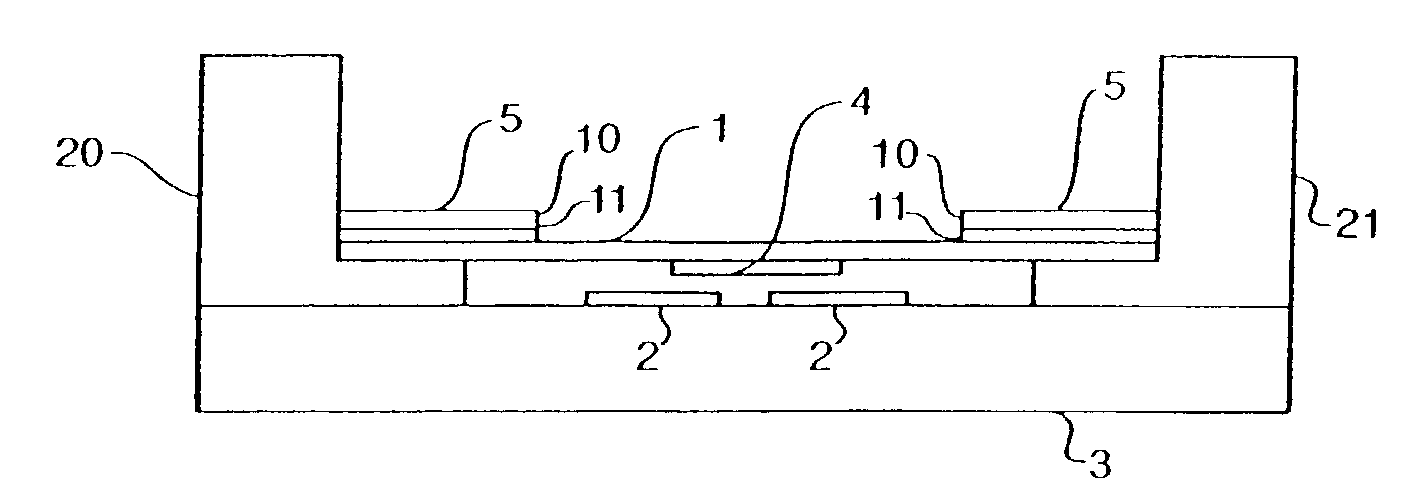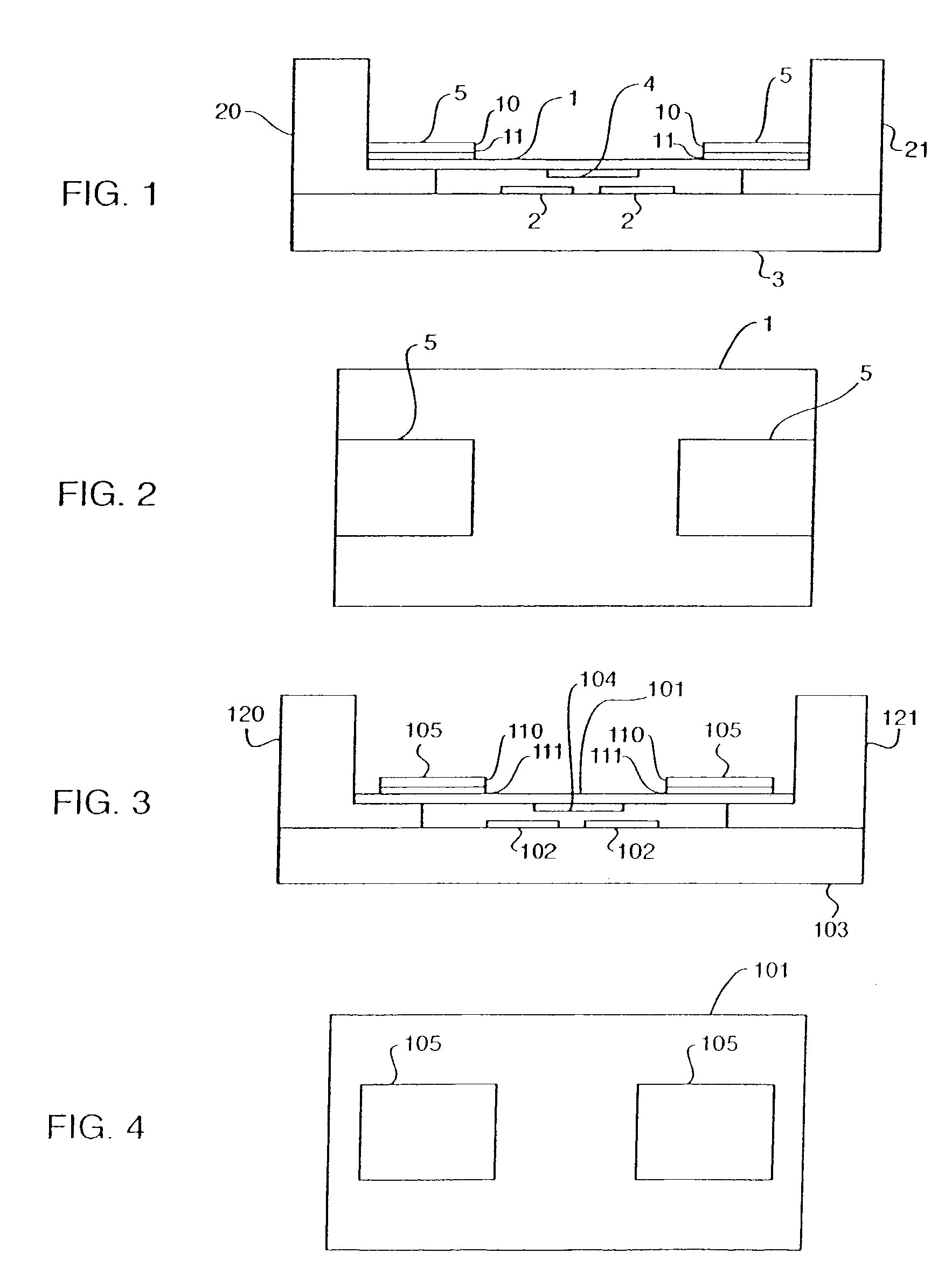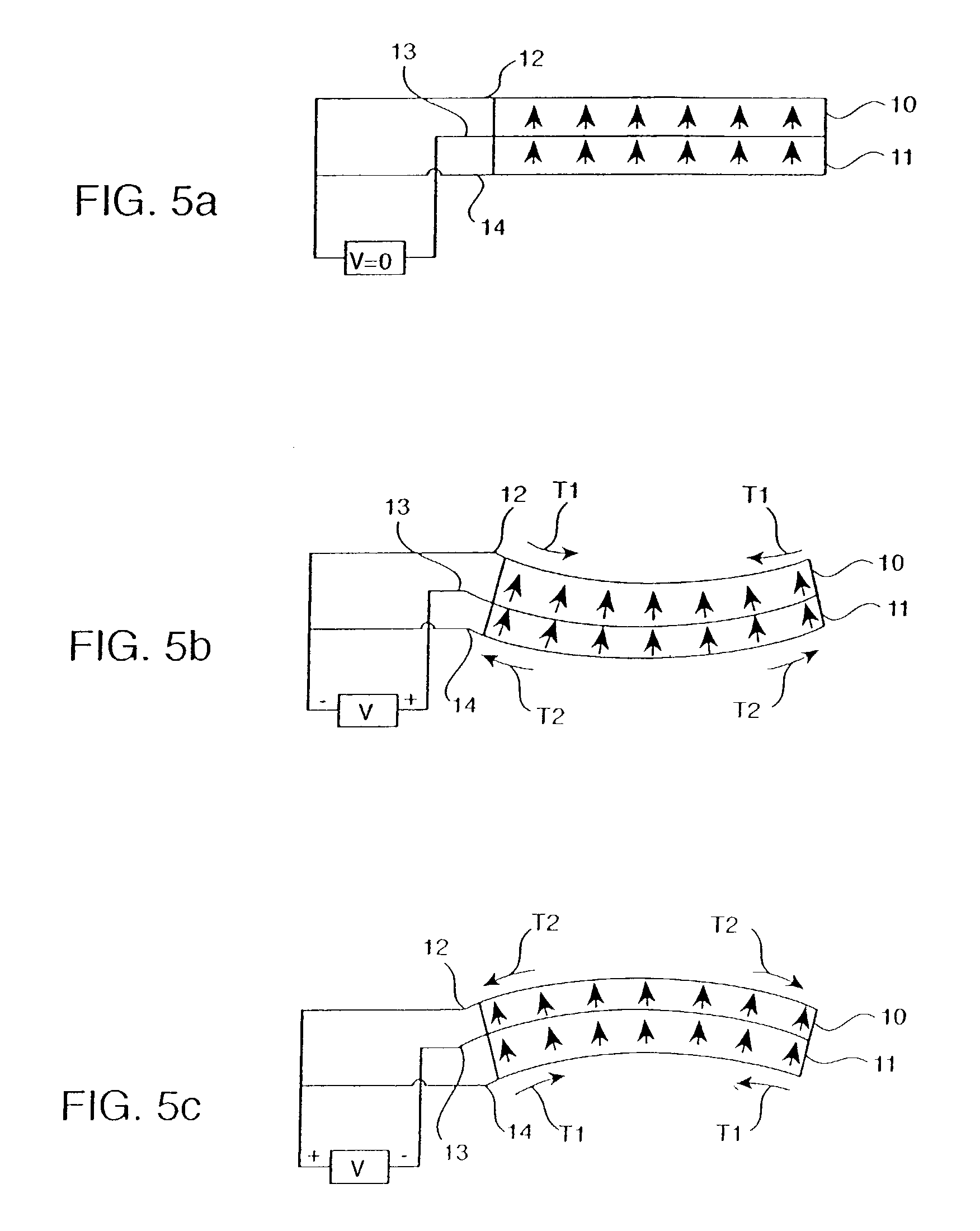Piezoelectric actuator for tunable electronic components
a technology of electronic components and actuators, applied in piezoelectric/electrostrictive/magnetostrictive devices, piezoelectric/electrostriction/magnetostriction machines, electrical apparatus, etc., can solve the problems of inability to maintain a high-q or quality factor, inherently lossy methods, and bulky structures, so as to facilitate the fabrication of custom laterals and reduce costs. , the effect of reducing the cos
- Summary
- Abstract
- Description
- Claims
- Application Information
AI Technical Summary
Benefits of technology
Problems solved by technology
Method used
Image
Examples
first embodiment
[0050]According to the process, the actuator is purchased commercially and then combined with the membrane. Combination of the commercially available actuator (for example a PI Ceramic PL-122.251 actuator, about 0.5 mm thick) with the membrane can be obtained by means of a thin layer of adhesive, about 1 micron thick. The use of the thin layer of adhesive will be described in better detail with reference to FIG. 6(c)(1).
second embodiment
[0051]According to the process, the actuator is made in-house and integrated with the membrane during the fabrication process. Note that the actuating assembly shown in FIGS. 1-4 may be fabricated by processes other than those depicted in the following figures. Further, while the following figures depict multiple separate fabrication steps, alternative fabrication processes may allow several separate steps to be combined into fewer steps. Finally, alternative fabrication processes may use a difference sequence of steps.
[0052]FIGS. 6(a)-6(e) show a process according to the first embodiment of the present invention, where a commercial piezoelectric actuator is assembled with a membrane. In each step of the process, generally known microfabrication techniques, such as masking, etching, deposition, and lift-off are used.
[0053]FIG. 6(a) shows a first step, where a trench 41 having a trench depth is patterned into the silicon wafer substrate 3. The trench depth is equal to the height of t...
PUM
| Property | Measurement | Unit |
|---|---|---|
| sizes | aaaaa | aaaaa |
| thicknesses | aaaaa | aaaaa |
| thicknesses | aaaaa | aaaaa |
Abstract
Description
Claims
Application Information
 Login to View More
Login to View More - R&D
- Intellectual Property
- Life Sciences
- Materials
- Tech Scout
- Unparalleled Data Quality
- Higher Quality Content
- 60% Fewer Hallucinations
Browse by: Latest US Patents, China's latest patents, Technical Efficacy Thesaurus, Application Domain, Technology Topic, Popular Technical Reports.
© 2025 PatSnap. All rights reserved.Legal|Privacy policy|Modern Slavery Act Transparency Statement|Sitemap|About US| Contact US: help@patsnap.com



